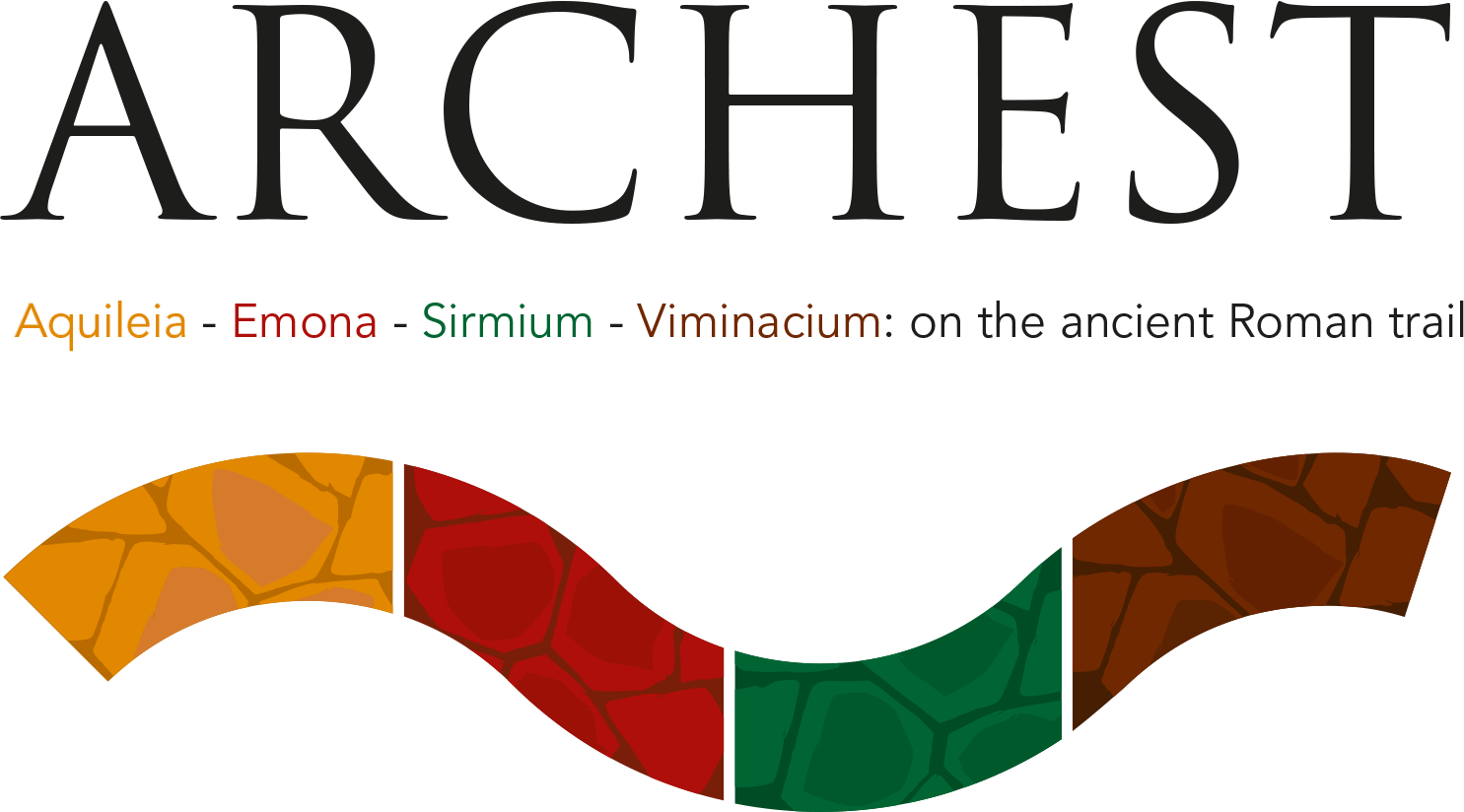
ARCHEST project aims at capitalising the results of the project T-PAS (Tourist promotion of the archaeological sites along the route Aquileia – Emona – Viminacium) co-financed by the CULTURE Programme 2007-2013 in 2011 and mentioned as good practice connecting culture and tourism during the Infoday on EU funds for tourism held in Brussels in March 2013.
Specific objectives of ARCHEST are:
To promote the knowledge and use of ICTs applied to Cultural Heritage;
To sensitize decision- and policy-makers on the importance of ICTs for the enhancement of the cultural heritage;
To promote the internationalisation of cultural workers active in archaeology (archaeologists, photographers, 3D designers, graphic designers, scientific popularisers);
To promote audience development taking into specific consideration young and disabled people;
To strengthen the network of archaeological sites connecting Italy to the Black Sea through Slovenia, Croatia, Serbia and Romania.
To promote the knowledge of the archaeological sites involved, also for tourism purposes.
ARCHEST! means Archaeology Est!, a mix between an English contemporary word and a Latin word that means “IT IS”.
The partnership is made up of 4 important Roman archaeological sites whose knowledge is essential to learn about Roman history in Europe and consequently to understand contemporary Europe.
However, these sites are characterised by the lack of easily understandable remains. It means that they are neither Rome nor Pompei, Nîmes, Split or Pula where there are many elevations and it is easier to understand the planning of a Roman town and to understand how a temple, a theatre or a forum were built.
In our case, in order to enlarge and develop the audience and to attract new audience, it is highly necessary to work on 3D reconstructions and to change the approach and the communication towards the audience. It’s the only way to let people understand how Aquileia, Emona (Ljubljana), Sirmium (Sremska Mitrovica) and Viminacium (Kostolac) were at Roman times, to increase tourism flows and employment in tourism- and archaeology-related sectors.
3D reconstructions, together with other activities, will be the tool to alter prejudiced public perceptions about archaeology being an “elitist” or “boring” cultural field that can be understood only by educated people.
Furthermore, archaeology, as other cultural sectors, is facing the substantial budgetary cuts that have affected culture and creativity all over Europe. This caused a reduction of the possibility of mobility (e.g. reducing excavation campaigns abroad), cultural exchanges and participation to international conferences and workshops that are very important in order to be competitive and more upskilled.
Target groups of ARCHEST are:
- Existing audience: general public, young people, families, disabled people, cultural and creative professionals (archaeologists, restorers conservators, historians, photographers, 3D designers, communicators of culture);
- Associations of professionals (associated to the project), Government bodies at national at local level, International organisations;
- Non-audience: transforming non-audience into audience.
General objectives of ARCHEST are:
- To support the archaeological sector and archaeology-related creative sectors to operate transnationally and to increase the knowledge of common Roman history through the most important archaeological sites;
- To build audience with integrated approach and contemporary technology, transforming non audience into audience and changing the approach considering archaeology something boring or too “elitist”;

 English
English српски
српски Slovenščina
Slovenščina Italiano
Italiano